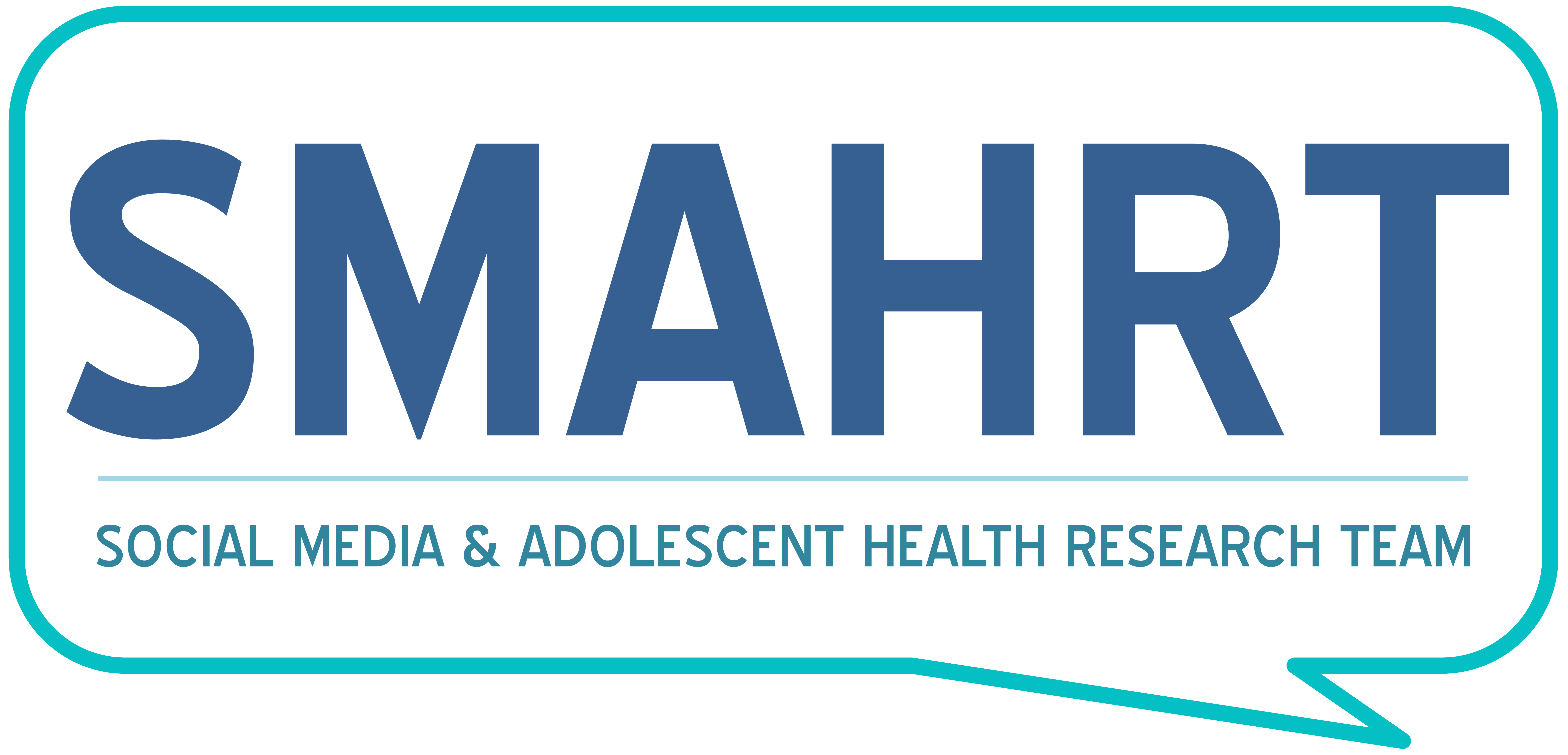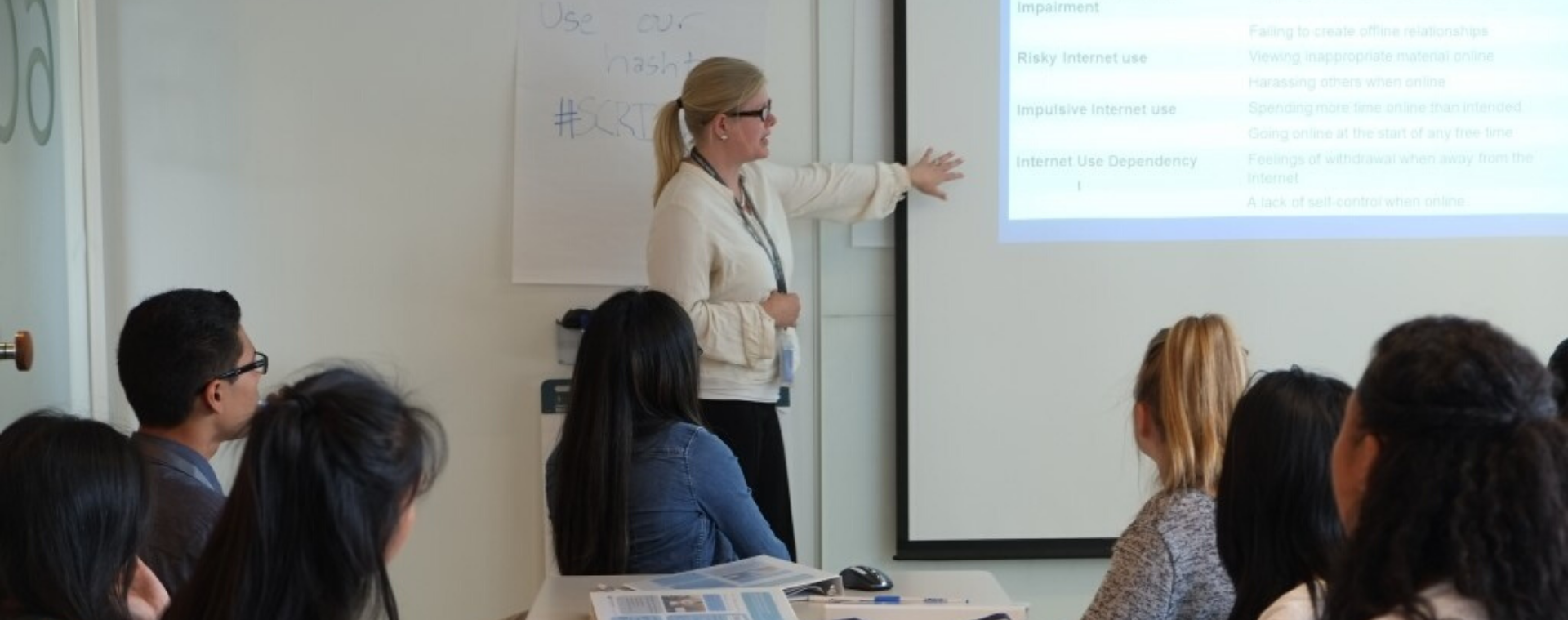By: Natasha Matta, TAM YAB Member
Suicide is a leading public health issue. It is the tenth leading cause of death in the United States, the second leading cause of death for people aged 10-34, and there is approximately 1 death by suicide every 11 minutes.
With media increasingly becoming people’s primary source of news, a vehicle for activism and social justice, and a means to connect and stay in touch with friends and family, it is important to investigate media’s effect on mental health. Research has linked heavy social media use with increased risk of anxiety and depression, loneliness, fear of missing out (FOMO), self-harm, and suicidal thoughts, and media can contribute to issues, such as cyberbullying, inadequacy with one’s life, body image, isolation, or self-absorption. On the other hand, social media can have benefits, such as providing emotional connection and social support and allowing one to stay in touch with old friends and meet new people with common interests. Social media is also an avenue for people to raise awareness and advocate for issues important to them, and it can serve as an outlet for creativity and self-expression.
One area of interest is how media coverage of suicide either increases others’ risk of suicidal behavior or destigmatizes suicide and encourages readers or viewers to seek help. There are two effects at play here: the Werther effect and the Papageno effect. The Werther effect, also called suicide contagion, imitative suicide, or copycat suicide, refers to the phenomenon by which indirect or direct exposure to suicide increases the risk of suicidal behavior. In contrast, the Papageno effect refers to how media can be used for suicide prevention.
The effects of media on suicidal behavior have been shown for newspaper and television reports of actual deaths by suicide, film and television portrayals of deaths by suicide, and suicides in literature, including “suicide guides.” Exposure to suicide or suicidal behaviors through media reports could result in an increase in suicide and suicidal behaviors. Over 100 studies, conducted across the globe, have established the risk of suicide contagion and that responsible reporting can reduce the risk of additional suicides. We also know that word choice and stigmatizing phrasing impact the likelihood that people will seek help as well as the quality of help they receive.
As such, it is vital that media, from news articles reporting celebrity deaths by suicides to movies including fictional suicides, ethically and safely portray and report on suicide. Reportingonsuicide.org’s Checklist for Responsible Reporting includes:
- Report suicide as a public health issue
- Include resources
- Use appropriate language
- Emphasize help and hope
- Ask an expert
These guidelines should be considered by not only journalists but also television and movie producers, authors, news anchors, and others in the media space.
Where do youth come in?
Young people are the heaviest social media users as well as the most vulnerable to media of all age demographics. In recent years, we have seen both how media can contribute to suicide contagion among youth or point people to crisis hotlines and mental health resources and encourage them to access help.
On March 31, 2017, Netflix released the television series 13 Reasons Why based on the best-selling novel with the same title. It portrays the life of Hannah Baker, a high school student, who dies by suicide and leaves behind 13 tapes, one for each of the people she believes is partially responsible for her death.
The show received backlash for its graphic portrayal of suicide, the romanticization of Baker’s struggles with mental health, simplistic and limiting explanation of suicidal behavior, and providing what can be interpreted as instructions on “how to” die by suicide. It was also critiqued for equating suicide to a method of achieving a goal like revenge or attention.
While Netflix did include warnings at the beginning of three episodes dealing with sexual assault and suicide, about a month later the graphic content advisories were strengthened and a warning about the whole series, not just specific episodes, was issued because the original warnings were not enough. 13 Reasons Why also had an external website with resources and information.
Another issue with 13 Reasons Why was that all of the episodes were released at once, as opposed to once a week. This format allowed viewers to “binge-watch” or watch several episodes in a short amount of time, as many as all episodes in one day. Netflix reports that 13 Reasons Why was the third most binge-watched show of 2017, which concerned researchers as the adolescent brain is heavily influenced by media while still developing the ability to mediate risky behaviors and intense emotions.
Discourse about 13 Reasons Why dominated Twitter, becoming the most Tweeted-about show of 2017 and receiving 11 million mentions on the platform in less than a month. Even without watching the show, young people could be exposed to its content, imagery, or discussion about the show and suicide on social media.
13 Reasons Why is associated with the increase in youth suicide rates in the month following its release (April 2017). A study published in the Journal of the American Academy of Child & Adolescent Psychiatry used interrupted time series analysis to forecast monthly suicide rates in age groups: 10-17 years, old, 18-29, and 30-64, to access the impact of 13 Reasons Why’s release. It found the show’s release was associated with a significant increase in monthly suicide rates among United States youth aged 10 to 17. It is clear that we need to re-evaluate guidelines for television portrayal of suicide to provide proper trigger and content warnings, include the crisis hotline phone number and other important mental health resources, and ensure minors are not exposed to graphic depictions of suicide.
While 13 Reasons Why tragically contributed to suicide contagion in youth, it did, in part, spark conversation and greater awareness about mental health and prompt the need for standardized suicide reporting and fictional portrayal guidelines. Going forward, it is the hope that television shows, movies, and other forms of visual media will learn from the mistakes of 13 Reasons Why to not include graphic depictions of suicide and provide the proper advisories and resources.
While media can pose a danger like with 13 Reasons Why, it can also be used for suicide prevention. On April 28, 2017, American hip hop artist Logic released the song “1-800-273-8255,” the number of the United States National Suicide Prevention Lifeline. The song follows the story of an individual calling the Lifeline and discussing their struggles and not wanting to be alive. 1-800-273-8255’s music video portrays a young Black man, who endures discrimination and bullying for his gay identity, plans to die by suicide, but instead, calls the lifeline, a turning point for him.
1-800-273-8255 became known as a “suicide prevention anthem,” and it was performed at the 2017 MTV Video Music Awards, hit the top 10 on the Billboard Hot 100 music charts in the U.S., and surpassed one billion streams on Spotify by the end of 2020. The song was also associated with an about 10% increase in online searches for the Lifeline in the 28 days after its release.
A study published in the BMJ also used interrupted time series analysis and found that the song was associated with a large increase in calls to Lifeline, especially in the 34-day period after the height of its public attention (e.g. the song’s release, 2017 MTV Video Music Awards, and 2018 Grammy Awards). It also showed a reduction in suicides during the periods with the most social media discourse about the song, as measured through Twitter activity.
Media can be wielded as a tool for suicide prevention or become an intentional or unintentional contributor to suicide contagion. As technology continues to evolve, it is essential that we have guidelines in place to ensure suicides are responsibly and safely reported on, that readers, viewers, or other media consumers have access to proper mental health resources, and that platforms have proper content advisories.
Resources
National Suicide Prevention Lifeline: Call 1-800-273-TALK (8255)
American Foundation of Suicide Prevention (afsp.org)
American Association of Suicidology (suicidology.org)
National Institute of Mental Health (nimh.nih.gov)
Suicide Prevention Resource Center (sprc.org)
Author’s Note
This topic is important to me because it affects my sister, friends, classmates, and other young people, and the media has such a strong influence on my generation. As a TAM YAB member, I understand that media and other forms of technology can be used for good or for harm, so it is vital that we raise awareness, put policies and safeguards in place, and equip adolescents with the tools to engage with media safely and prioritize their mental wellbeing. We need accurate and non-stigmatizing reports and media portrayals of suicide and the nuanced risk factors and reasons for it.


